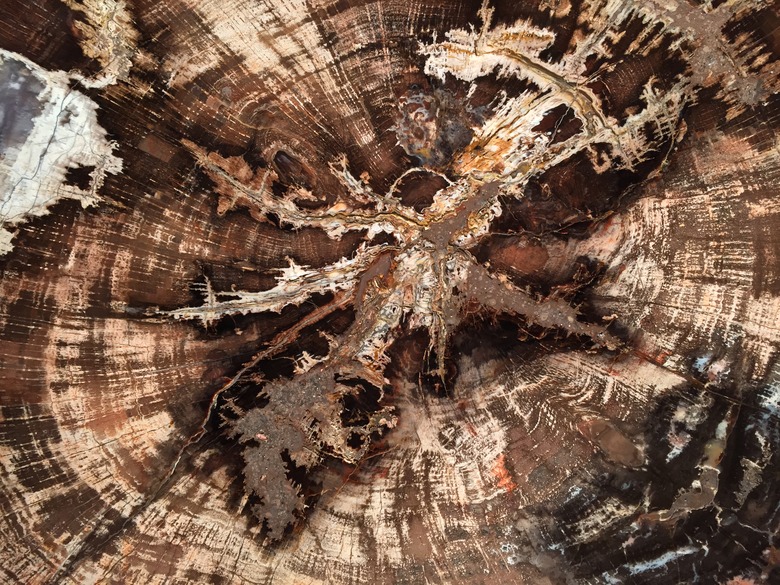How To Identify Types Of Petrified Wood
Identifying petrified wood types can be a difficult and sometimes impossible task. Some pieces of wood lose so much of their original cell structure during the petrifying process that it is impossible to recover enough information to identify them. Some types of wood are distinct enough that novices can recognize them with only a 10x magnifying glass. Even the best specimens of some wood species take training and high-magnification equipment to identify.
First Clues
First Clues
The quality of the wood will determine whether the piece can be identified. Original cell structure is sometimes completely destroyed by the petrification process. If you can see patterns in the wood, there is a good chance the piece can be identified. Knowing what types of trees grow in the areas in which the wood was found cann also help in identifying your piece. If a specimen can be narrowed down to a few possibilities, some types can be ruled out because they would most likely not be found with known species of that area. The rest of the identification process requires magnification.
Cell Structures
Cell Structures
Some cell structures are evident with magnification of only 10x. Others may need up to 800x magnification. Cells (tracheids) of different classes of wood are arranged in different patterns. For instance, when looking across the wood as you would when viewing growth rings, a conifer tree has small round cells that form fairly straight lines. Angiosperm (oak, walnut, sycamore) have vessels rather than tracheids, which are similar, yet they don't form neat rows nor are they always round. Ginkgo has yet a different cell formation which is similar to corn. Knowing the cell structure of different forms of wood is necessary for proper identification.
Rays And Other Distinctive Features
Rays And Other Distinctive Features
Rays are important indicators of wood types. Rays are lines of small cells that run from the center of the round to the bark. In some types of wood, these rays are thin, sometimes only one or two cells wide, and in others they are wider or of different widths. Fruit-bearing trees have many widths of rays while pine has narrow and uniform rays. Some woods have other distinctive features. Pine, for example, has "resin ducts." These ducts look like cells but are much larger. If they are found in wood with small straight lines of cells and narrow rays, no further examination is necessary to know the wood is pine.
Examination Methods
Examination Methods
Examination is often done by making a cube of the wood so it can be seen from different axis angles. The wood cubes are finely sanded to take out scratches that can hinder identification. If high levels of magnification are necessary, thin slices of wood only a few cells thick are used. The examiner must know the aspects of different woods, so some education is involved in the process, too. Technology is making identification easier with computer software that can aid in the identification process. This software can be purchased online by anyone who wishes to pursue the field of fossilized wood identification.
Cite This Article
MLA
Taylor, Sally. "How To Identify Types Of Petrified Wood" sciencing.com, https://www.sciencing.com/identify-types-petrified-wood-8150213/. 22 November 2019.
APA
Taylor, Sally. (2019, November 22). How To Identify Types Of Petrified Wood. sciencing.com. Retrieved from https://www.sciencing.com/identify-types-petrified-wood-8150213/
Chicago
Taylor, Sally. How To Identify Types Of Petrified Wood last modified March 24, 2022. https://www.sciencing.com/identify-types-petrified-wood-8150213/
